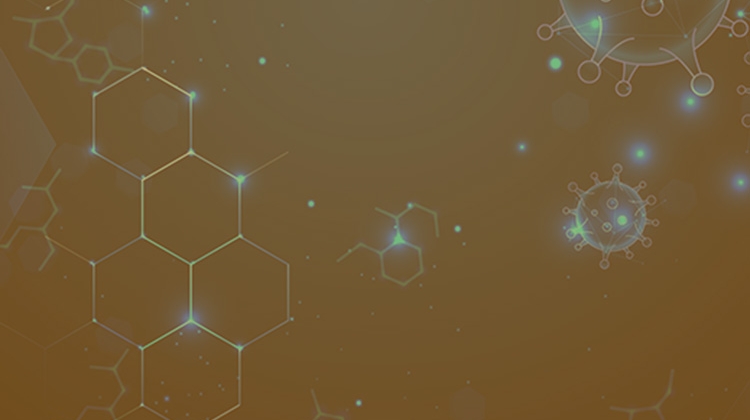Regulators on Annex 1 Implementation

Insight from Austria’s Regulatory Authority Representative
At the 2024 ISPE Aseptic Conference, held March 12-13 in Vienna, Austria, Christina Meissner, a European Union Good Manufacturing Practice (GMP) inspector at the Austrian Agency for Health and Food Safety since 2013, and Chair of the PIC/S Drafting Group on Annex 2A and 2B, published in May 2021, offered a presentation titled “Inspection of Manufacturing Facilities in Austria.”
She began by listing the types and numbers of pharmaceutical establishments in Austria within the agency’s surveillance mandate. They include 656 licensed manufacturers, control laboratories, wholesalers, blood banks and plasma centers, 171 registered “distance selling” pharmacies, 94 licensed or certified tissue establishments, 284 clinical trial notifications for medicines, 494 medical device market surveillance activities, and 45 market surveillance activities for medicines.
She added that the agency’s Good Manufacturing and Distribution Practice (GMDP) inspectors have a variety of duties, including assessing industry’s implementation of Annex 1.
Meissner noted that Annex 1 has been in force since August of 2022 and since then her agency has conducted inspections at several facilities. She said that the inspectors identified some very good practices and some practices that needed to be “upgraded.”
She reminded attendees that the aim of those in industry, and the aim of inspectors, should have the common goal of providing the highest quality products to patients. That suggestion led to her discussion of a core feature of Annex 1 implementation – the development of the contamination control strategy (CCS) – which seeks to minimize the risks for product contamination from microbial, endotoxin/pyrogen, and particle sources.
She urged members of industry to assess the risks that may be posed in their current processes and to make a gap assessment using the new Annex 1’s requirements in relation to their established processes. They should then implement their risk assessment, and then go back to look at the principles of quality risk management (QRM) as documented in ICH Q9.
Meissner added that the gap/risk assessment should be carried out by a cross-functional team that should include local experts, and that pre-existing knowledge should be employed. Once more, in the risk assessment report (or failure mode and effect analysis, also known as FMEA), all of the risks, as well as the implemented actions to mitigate them, should be documented.
Among the activities necessary to implement Annex 1, Meissner pointed to the implementation of post-sterilization integrity testing (PUPSIT) as Annex 1 now contains a PUPSIT requirement for verifying the integrity of a sterilizing grade filter – both before its use and after its sterilization. While she emphasized that PUPSIT is a requirement, she also noted that PUPSIT is a “controversial topic,” but that deviation from the PUPSIT requirement is allowed only under specially justified circumstances.
Meissner also touched on Annex 1 topics such as the transfer of materials, noting that manual disinfection (“spray and pray”) should be avoided, and generally discussed the issue of outdated facilities by saying that the take home message was that outdated facilities and outdated equipment needed to be modernized for Annex 1 compliance.
Regarding Annex 1’s challenges for compounding pharmacies, she cited the potential need for compounding process designs to be re-assessed under Annex 1 and, in dealing with new technologies, she cautioned against buying robotic systems “off-the-shelf.”
Further, regarding the innovation and implementation of new technologies, she mentioned that she is involved with the European Medicines Agency’s (EMA) quality innovation group and that employing new technologies was, for her, “close to my heart.” She finished her presentation by saying that we need to understand and drive innovation forward at its best, and to do so at our full capabilities.
Insight from Germany’s Regulatory Authority Representative
Daniel Mueller, head the of GMP inspectorate for the local competent authority in Tuebingen, Germany, has worked since 2001 as a GMDP inspector charged with conducting national inspections as well as conducting EMA and overseas inspections. Before joining the authority, Mueller worked in the pharmaceutical industry, last serving as qualified person for sterile drug products. He is member of the German expert group on biotechnology and tissue and quality assurance.
Mueller’s presentation, titled “Revised (EU) Annex 1: Fit for Future?” covered a variety of topics related to, and covered in, the most recent version of Annex 1.
He began by posing two questions: “Is this guidance fit for the future?” and “Is this the best guidance at the moment?”
Noting that the new version of Annex 1 is “not a stand- alone document,” and that it has its base in an existing regulatory world, he subsequently offered a list of related regulatory guidelines and documents that preceded the new Annex 1. Among them are:
- US Food and Drug Administration’s (FDA)Guidance for Industry: Sterile Drug Products Produced by Aseptic Processing — Current Good Manufacturing Practice (2004)
- PIC/S PI 007 Validation of Aseptic Processes (2011)
- ISO 13408-x Aseptic processing of health care products (2015)
- ISO 14644x Cleanrooms and associated environments (2016)
- EMA/CHMP/QWP/850374/2015 Guideline on the sterilization of the medicinal product, active substance, excipient and primary container (2019)
- EMA/CHMP/QWP 85037/2015 Quality of water for pharmaceutical use (2020)
He suggested that Annex 1 is set into a framework of regulatory documents but, as the newest version, it is “the best at the moment” because it was the result of a complex procedure, a compromise, and is now “the most modern guidance we have” for aseptic and sterile manufacturing.
He emphasized that the 2022 Annex 1 is “a big upgrade” over the previous version (2008), with a completely new structure, more text (more than double the number of pages from the 2008 version), more detailed QRM requirements, and organizational requirements needing to be quickly implemented. He added that Annex 1’s technical requirements will take some time to implement.
Mueller also explained that Annex 1 now contained a glossary, adding that he was happy to see it because there were a “huge number of new clauses,” and that there were there were some terms in the 2008 version that were not legally defined - but are now legally defined. For example, the new glossary makes clear what an “isolator” means and clarifies what a RABS system is.
He also reminded attendees that there were two drafts of the new Annex 1, and it took over five years to finalize the larger, upgraded version, which he said was much more complete when compared to the 2008 version of Annex 1.
Mueller went on to cite major sources of contamination emphasized in the new Annex 1 that went above basic knowledge as contained in the 2008 version with new as text regarding personnel, equipment and material, cleanroom environment, and products that have new requirements.
He cited additional sources of contamination that have been newly emphasized in Annex 1 including:
- Physical segregation and barrier systems, automation and robotics, gowning training, disinfection
- Material transfer
- Electronic devices in cleanrooms
- Sterile filtration
- Closed and single use systems
- PUPSIT
With regard to PUPSIT, he said there are some discussion points and a situation where “you have the one group believing in it and another group fighting against it.”
Topic by topic, Mueller covered several newly defined or added aspects of aseptic manufacturing now covered in greater detail in the new Annex 1.
Barrier systems (restricted access barrier systems, or RABS, and isolators)
Mueller discussed how the 2022 version of Annex 1 now sets standards for barriers where the 2008 version simply “recommended” barriers. He added that a sound scientific justification is needed for other approaches.
He also mentioned that there were more detailed requirements for facility design, glove systems (now requiring integrity testing and monitoring of glove systems), and new requirements for barrier decontamination.
Gap analyses
Mueller said that it is important for members of industry to have already carried out a gap analysis and to have a plan for its implementation. He made a personal recommendation that it would be wise for a company to proactively inform the competent authority of having done a gap analysis and point out areas where the company is seeking to improve.
Mueller added that, hopefully, companies will not wait until an inspector gives them a list of their gaps, which would not make the situation better.
Personnel, gowning, and electronic devices
Mueller noted the detailed amount of text Annex 1 devotes to gowning requirements and garment management, especially with regard to reuseable clothing. Equally important in the “Personnel” chapter are new restrictions on electronic devices in cleanrooms, especially personal cell phones and tablets.
Contamination Control Strategy (CCS)
He discussed CCS as a basic strategy for controlling the risk of particulate and microbial contamination that he said runs “as a red thread” through the whole of Annex 1.
Mueller’s recommendations for implementing Annex 1
- Already have an established a gap analysis
- Ensure teams have started making the new organizational requirements; Mueller also noted that a CCS has been a key requirement beginning with the first draft of Annex 1 in 2017
- Already have a strategy for all new technical requirements, such as those pertaining to barriers, PUPSIT, and other issues
- Talk to your competent authority (GMP inspectorate)
Mueller’s list of “don’ts” for Annex 1 implementation
- Don’t wait until the next inspection without starting activities toward implementation requirements
- Don’t wait for an inspector to give you a list of “to do’s” for implementation of all yet unfulfilled requirements
- Don’t pretend to be “surprised” by the “new” Annex 1
Disclaimer
This is an informal summary of presentations on 12 March 2024 at the 2024 ISPE Aseptic Conference in Vienna, Austria. It has not been vetted by any of the agencies or regulators mentioned in this article, nor should it be considered the official positions of any of the agencies mentioned.






